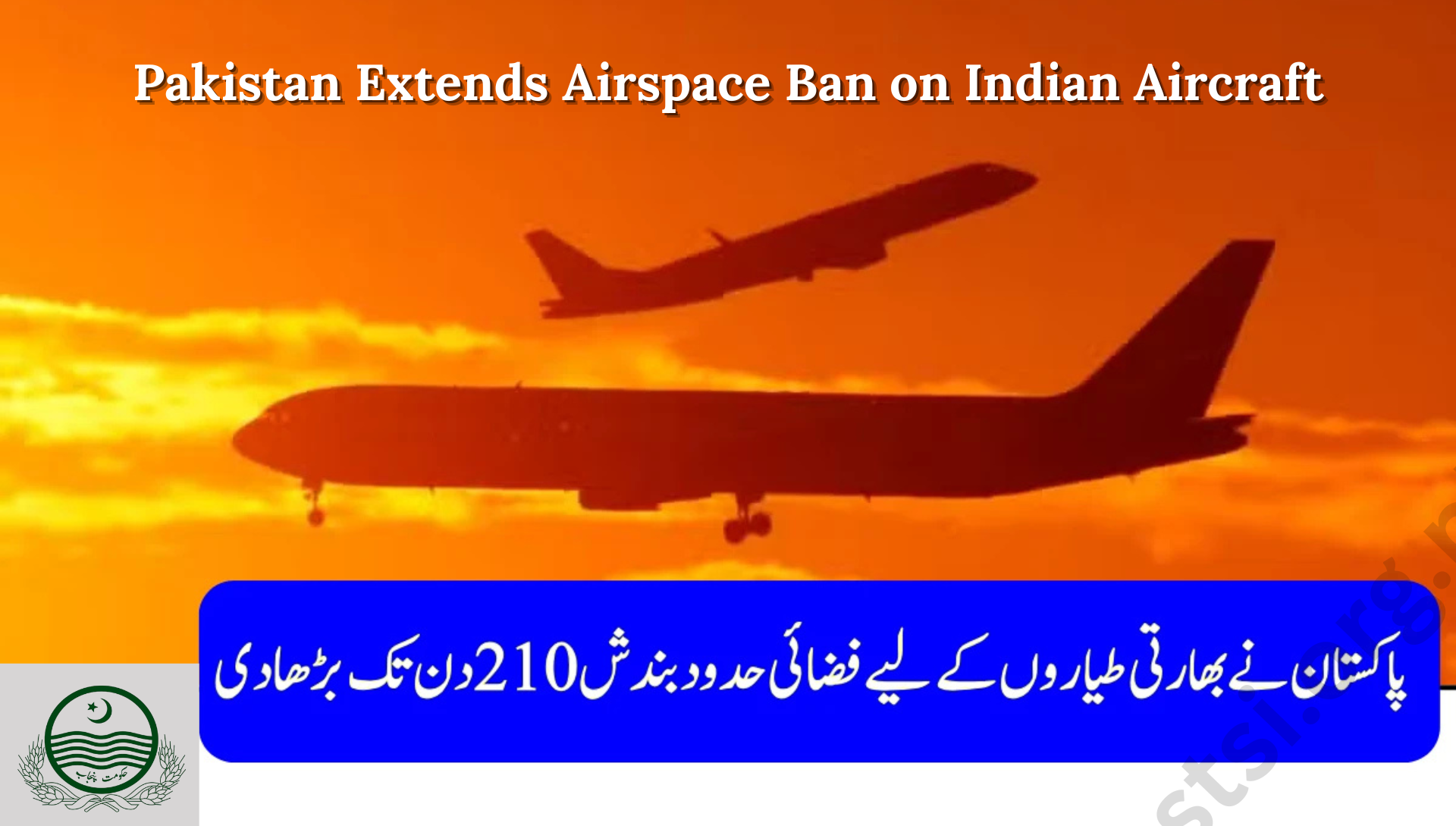Pakistan Extends Airspace Ban on Indian Aircraft: 210 Days of Closure in 2025. Pakistan has once again reaffirmed its ban on Indian commercial and military flights, extending the restriction on India-registered aircraft to 210 consecutive days. This decision, officially announced through a Notice to Airmen (NOTAM), highlights escalating tensions between India and Pakistan and has significant implications for the aviation sector in both countries. In this article, we explore the reasons behind the closure, military exchanges, aviation impact, and historical precedents.
Why Did Pakistan Close Its Airspace?
The airspace ban stems from India suspending the Indus Water Treaty following the Pahalgam attack in Indian Illegally Occupied Jammu & Kashmir (IIOJK). Pakistan, responding to India’s actions, extended its ban on Indian aircraft on May 23, 2025.
Timeline of Events
| Date | Event |
|---|---|
| April 30, 2025 | India blocks Pakistani airlines from its airspace |
| May 6–7, 2025 | Indian airstrikes on Pakistani cities |
| May 7–10, 2025 | Pakistan retaliates with Operation “Bunyan-um-Marsoos” |
| May 23, 2025 | Pakistan extends airspace closure on Indian flights |
| September 2025 | Ban reaches 210 consecutive days |
The Indus Water Treaty suspension and subsequent airspace restrictions demonstrate the deepening Indo-Pak tensions, with strategic and financial consequences for both nations.
Escalation & Military Exchange
During the airspace standoff, both countries conducted military operations that further strained relations:
- Pakistan reported downing 6 Indian fighter jets, including 3 Rafales.
- Dozens of drones were destroyed during the confrontation.
- The exchange lasted 87 hours, ending with a US-brokered ceasefire on May 10, 2025.
This operation, termed “Bunyan-um-Marsoos”, showcased Pakistan’s air defense capabilities while emphasizing the volatile security situation in the region.
Aviation Impact
The airspace closure has caused financial and operational challenges for the aviation industry.
Impact on Indian Airlines
- Longer flight routes, increasing travel time and fuel consumption.
- Higher operational costs due to detours and logistical adjustments.
- Revenue losses reaching millions for carriers operating frequent Indo-Pak routes.
Impact on Pakistani Airlines
- Minimal disruption, with limited route adjustments.
- Focus on domestic and alternative international routes to reduce financial impact.
Table: Comparative Aviation Impact
| Factor | Indian Airlines | Pakistani Airlines |
|---|---|---|
| Flight Detours | Significant | Limited |
| Fuel Costs | Increased | Marginal increase |
| Revenue Loss | High | Low |
| Operational Adjustments | Major | Minor |
The extended closure has forced airlines to re-evaluate flight paths, adjust ticket pricing, and mitigate losses through alternate routes.
Historical Context of Airspace Closures
This is not the first instance of Pakistan closing its airspace to India. Past events include:
- 1999 Kargil War: Indian airlines faced costly reroutes and schedule delays.
- 2019 Pulwama Crisis: Extended closures disrupted flights and caused aviation losses on both sides.
Lessons from History
- Airspace closures are strategic tools in Indo-Pak diplomacy.
- Economic costs often outweigh immediate military advantages.
- Airlines must maintain flexibility and risk management plans for future incidents.
Geopolitical Implications
The airspace ban is a reflection of deteriorating Indo-Pak relations, influenced by:
- Military conflicts in IIOJK
- Suspension of water treaties and bilateral agreements
- Global diplomatic pressures, including mediation by the US and UN
LSI Keywords: Indo-Pak relations 2025, Pakistan airspace ban, India-Pakistan tensions, Indian aviation losses, Operation Bunyan-um-Marsoos, NOTAM airspace closure, military airstrikes India-Pakistan.
Aviation Financial Analysis
Extended flight detours have substantial financial implications:
- Fuel Costs: Indian airlines report a 15–20% increase on affected routes.
- Flight Delays: Average 45–60 minutes longer per route.
- Revenue Loss: Estimated losses over $50 million since April 2025.
Pakistan Airlines, by contrast, has optimized domestic operations, maintaining revenue stability.
Future Prospects
While the airspace closure continues, experts suggest:
- Diplomatic negotiations may gradually ease restrictions.
- Aviation sector adaptation, including alternate international routes.
- Long-term strategic planning for Indo-Pak trade and air travel.
FAQs
Q1: How long will Pakistan’s airspace remain closed to India?
A1: Currently, the closure has lasted 210 days as of September 2025. No official end date has been announced.
Q2: How does this closure affect Indian passengers?
A2: Passengers experience longer flight times, higher ticket prices, and occasional flight delays due to rerouted paths.
Q3: Is Pakistan affected financially by this ban?
A3: Minimal impact is reported, as Pakistan Airlines adjusted routes and focused on domestic flights.
Q4: Have there been past airspace closures?
A4: Yes, during the 1999 Kargil War and 2019 Pulwama Crisis, similar closures occurred.
Q5: What triggered the 2025 closure?
A5: India’s suspension of the Indus Water Treaty and the Pahalgam attack prompted Pakistan to extend its airspace ban.
Conclusion
Pakistan’s airspace ban on Indian aircraft has entered its 210th day, reflecting continued Indo-Pak tensions and strategic maneuvering. While Indian airlines bear the brunt of financial losses, Pakistan maintains its restriction as a strong geopolitical statement.














